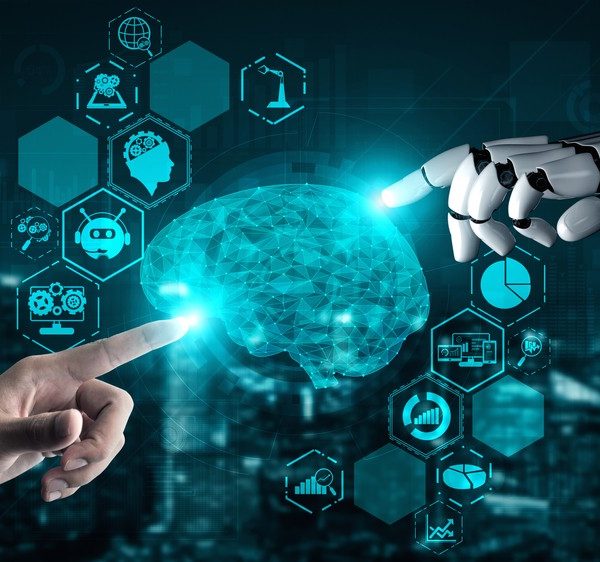
How AI Can Make Weather Better?
Weather forecasting has come a long way since the days of divining rods and weather vanes. Thanks to the advancements in artificial intelligence (AI) and machine learning, weather prediction has become more accurate and reliable than ever before. In this article, we’ll explore how AI is making weather forecasting better and more precise.
Read Also: Do Self-Driving Cars See in Bad Weather?
Accurate Prediction with AI
With the help of machine learning, AI can analyze massive amounts of data from various sources, such as satellites, weather balloons, and ground-based sensors. It can then use this data to detect patterns and generate predictions about future weather conditions. This has led to a significant improvement in the accuracy of weather forecasting, as AI can analyze and process data much faster and more efficiently than humans.
Nowcasting with AI
One of the most significant advantages of AI in weather forecasting is its ability to nowcast. Nowcasting is the process of predicting weather conditions for the immediate future, typically the next few hours. AI can use real-time data to generate highly accurate nowcasts, which can be invaluable for short-term planning and emergency response.
Forecasting with AI
AI can also be used for longer-term weather forecasting. By analyzing historical data and detecting patterns, AI can predict future weather conditions with great accuracy. In fact, research has shown that AI can deliver forecasts that are on par with those of conventional models, but with a lower level of computing.
Forecasting Rainfall with AI
One of the most challenging aspects of weather forecasting is predicting rainfall. AI can help by analyzing a wide range of variables, such as wind speed, temperature, and atmospheric pressure, to generate highly accurate rainfall predictions. This can be particularly useful for agriculture, hydrology, and disaster management.
Interesting Insight: How Can We Use AI to Fight Air Pollution?
Advantages of AI in Weather Forecasting
The main advantage of AI in weather forecasting is its ability to analyze and process vast amounts of data much faster and more accurately than humans. This allows for more precise predictions, particularly in the short-term. Additionally, AI can analyze historical data to detect patterns and make more accurate long-term predictions.
The Importance of Data Collection for Weather Forecasting
As humans, we are always trying to predict and prepare for the future. One of the key areas where this is vital is in weather forecasting. The ability to accurately predict weather patterns and severe weather events can save lives and property. However, this is not a simple task. Meteorologists rely heavily on data collection and analysis to make their predictions.
Collecting Data for Weather Forecasting
The process of collecting weather data involves a range of techniques and technologies. These include weather sensors, data loggers, and satellites. With the help of IoT, these devices are able to provide real-time weather and climate data from around the world. However, the sheer volume of data that is collected is overwhelming. It is impossible for humans or traditional computer programs to make sense of it all.
Using AI to Analyze Data
This is where artificial intelligence (AI) comes in. AI systems such as machine learning, neural networks, and deep learning have pattern-recognition capabilities that allow them to analyze vast amounts of data. By feeding massive amounts of data into the system, the AI can learn to detect patterns and make accurate predictions.
The Benefits of Better Data Collection
Improving data collection is crucial for enhancing weather forecasting. The better the data, the smarter the algorithms can become. By analyzing underwritten patterns within the ecosystem of the collected datasets, AI can detect patterns and give us deeper insights into the possibilities of future weather.
Applying AI to Climate Datasets
The benefits of AI are not limited to weather forecasting. By applying the same pattern-recognition capabilities to climate datasets, we can identify patterns that could lead to destructive hurricanes or other extreme weather events in the future. This could help us to better prepare and mitigate the impact of these events.
How Data Insights are Revolutionizing Meteorology
As technology advances, so does the world of weather forecasting. The latest artificial intelligence techniques are making waves in the field, training neural networks to rely on the massive amount of data available to develop their own understanding of how conditions evolve. In this article, we’ll explore how AI and machine learning are changing the game for weather prediction.
Satellite Meteorology and Atmospheric Science
Rather than relying on the laws of physics, AI techniques rely on massive amounts of data to make predictions. Satellite meteorology and atmospheric science offer the perfect environment for these techniques to develop and evolve. By feeding the insatiable appetite of AI for data, researchers are pushing the boundaries of what’s possible.
A Long History of AI in Weather and Climate
Basic AI techniques have been applied to weather and climate since the first conference on artificial intelligence was sponsored by the National Oceanic and Atmospheric Administration in 1986. However, recent advances in deep learning and increased availability of high-performance computers have enabled a rapid increase in research.
Combining Machine Learning and Forecasting for Accurate “Nowcasting”
One area where AI and machine learning are making a significant impact is in “nowcasting” – predicting the future at a rapid rate that conventional methods cannot match. Researchers at Google Research recently discovered that deep neural networks can predict rainfall in the next eight hours more accurately than state-of-the-art traditional weather models, even if no physical laws are explicitly encoded into them.
Conclusion
It is undeniable that the combination of artificial intelligence (AI), machine learning (ML), neural networks, deep learning, and high-performance computing will have a significant impact on the quality of weather forecasting. In recent times, weather forecasters and climate scientists have increasingly relied on these tools to analyze massive amounts of data and detect patterns that may indicate severe weather or climate change, among other things. The integration of predictive technologies and powerful algorithms will undoubtedly enhance weather forecasting significantly.
The rapid advancements in machine learning bring great promise for weather prediction and weather advances, which can accurately forecast heavy rain, inches of rainfall, rain accumulations, hurricane tracks, and other extreme weather conditions. We have made considerable progress from relying on primitive tools to the proliferation of tools, augmented by vast amounts of data from various modeling earth systems, satellite images, and collaborations between scientists and their AI and machine learning experiments to predict the weather better.
While there are significant challenges in perfecting weather prediction, we are gradually tackling smaller challenges in meteorology that deal with complex processes and human expertise. We are embedding them with AI and machine learning to add a sophisticated layer of computing and prediction.
























